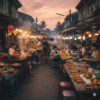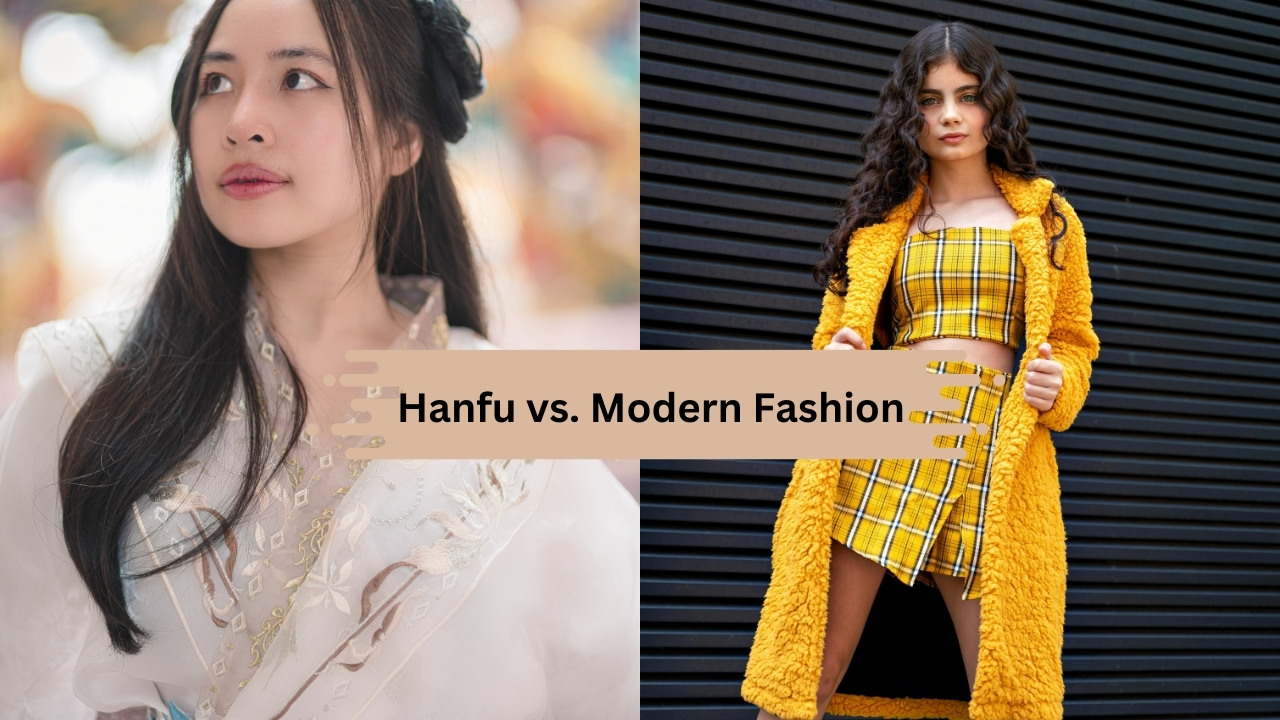You’ve probably seen it happening without even realizing it. Maybe it was someone at a festival wearing flowing silk robes, or that Instagram post that made you stop scrolling because the outfit looked so different from everything else. Traditional Chinese clothing called Hanfu is everywhere these days, and it’s not just people dressing up for special occasions anymore.
This whole revival thing is pretty fascinating when you think about it. Young people are ditching their jeans and t-shirts for elaborate robes with sleeves that could double as blankets. But here’s the thing, it’s not really about the clothes themselves. There’s something much bigger going on here.
What Makes Hanfu So Different
The first time you see someone wearing authentic Hanfu, it’s kind of jarring. Everything about it goes against what we think clothes should do. While most modern fashion tries to show off your body shape, Hanfu does the complete opposite. It’s all about these graceful, flowing lines that make the person wearing it look like they’re floating.
The way these clothes are put together is completely different too. Each piece follows patterns that haven’t changed much in hundreds of years. Those ridiculously wide sleeves weren’t just for show, they actually served purposes in daily life back then. The whole layering system made sense for changing temperatures and, believe it or not, told other people things about your social status.
Even the colors mean something specific. You couldn’t just throw on any combination and call it good. Certain patterns indicated whether you were married, what season it was, or if you were celebrating something important. Compare that to modern fashion where we change color trends every few months just because some marketing team decided it was time for a new look.
Why Young People Are Actually Into This
Here’s where it gets interesting. The people driving this comeback aren’t doing it for Instagram likes or to look unique at parties (though that happens too). A lot of them grew up feeling pretty disconnected from their cultural background. Maybe their grandparents spoke Chinese but their parents didn’t teach them, or maybe they knew about Chinese New Year but not much else about the culture.
Hanfu gives them something concrete to hold onto. It’s not just reading about history in a book, it’s actually wearing a piece of that history. And social media has made it way easier to figure out how to do it right. You can find tutorials on everything from how to tie the sashes properly to which dynasties had the best sleeve styles.
The community aspect is pretty cool too. These aren’t just individual fashion choices, people are forming real friendships around this stuff. They meet up for photoshoots in parks, attend cultural festivals together, and spend hours discussing the differences between Tang and Ming dynasty styles. It’s become a whole lifestyle for some people.
How Traditional Elements Are Sneaking Into Regular Fashion
Fashion designers have definitely noticed what’s happening. Walk through any department store and you’ll start seeing elements that look suspiciously familiar. Wide sleeves on regular blouses, those traditional knot buttons showing up on modern jackets, flowing silhouettes that would have looked completely out of place five years ago.
Some of this fusion works really well. Designers who take the time to understand what they’re working with create beautiful pieces that honor the original while making sense for modern life. But then you’ve got others who just slap some “Asian-inspired” details on regular clothes and call it a day.
The problem is when traditional designs get stripped of everything that made them meaningful and then mass-produced cheaply. It feels pretty disrespectful to the people who are trying to preserve authentic practices. Many enthusiasts prefer supporting businesses that actually understand the cultural context and maintain traditional construction methods, retailers like JianxiHanfu that prioritize historical accuracy over quick profits.
It’s About More Than Just Clothes
The thing that really strikes you when you talk to people who are serious about Hanfu is how much thought goes into it. Putting on traditional dress becomes this whole ritual that forces you to slow down and be intentional about what you’re doing. There’s something almost meditative about the process that most people don’t get from throwing on regular clothes.
Learning about proper wearing techniques opens doors to all sorts of other cultural knowledge. People start getting interested in traditional arts, classical literature, even things like tea ceremony and calligraphy. The clothing becomes a gateway to understanding a whole worldview that emphasizes harmony, balance, and mindfulness.
For people whose families immigrated generations ago, Hanfu can create bridges back to cultural traditions that might have gotten lost along the way. Grandparents who haven’t talked much about the old country suddenly have stories to share when they see their grandchildren dressed in traditional clothes.
The Real Challenges
Of course, not everyone thinks this revival is such a great thing. Some critics point out that romanticizing traditional clothing ignores the less pleasant realities of historical Chinese society. These clothes were part of systems that included rigid social hierarchies and restrictions that modern people wouldn’t tolerate for five minutes.
Then there are the practical issues. Traditional clothing requires a lot more care than throwing everything in the washing machine. The fabrics are delicate, the construction is complex, and figuring out how to wear everything properly takes time and practice. Most people’s busy modern lives don’t really accommodate that level of attention to clothing.
Cost is a real barrier too. Quality traditional clothing isn’t cheap. Good pieces require skilled artisans, expensive materials, and tons of construction time. A single authentic outfit can cost more than most people spend on clothes in several months.
Where This Is All Heading
The momentum behind this movement doesn’t seem to be slowing down at all. If anything, it’s picking up speed as more people get frustrated with fast fashion and meaningless consumption. Traditional clothing offers something that regular fashion just can’t deliver, this combination of beauty, quality, and actual cultural significance.
Universities are starting to offer classes in traditional clothing construction and cultural context. Museums are putting together exhibitions. What started as a fashion trend is turning into genuine educational and cultural preservation efforts.
The influence on mainstream fashion will probably keep growing as designers look for fresh inspiration and consumers demand more meaningful choices. But the most important impact might be how this whole revival is getting people to think more carefully about what they wear and why. In a world full of disposable everything, there’s something pretty powerful about choosing clothes that connect you to centuries of history and craftsmanship.
This shift represents something much bigger than changing fashion trends. It’s about people looking for authenticity and meaning in a world that often feels pretty shallow and disconnected from anything real.










